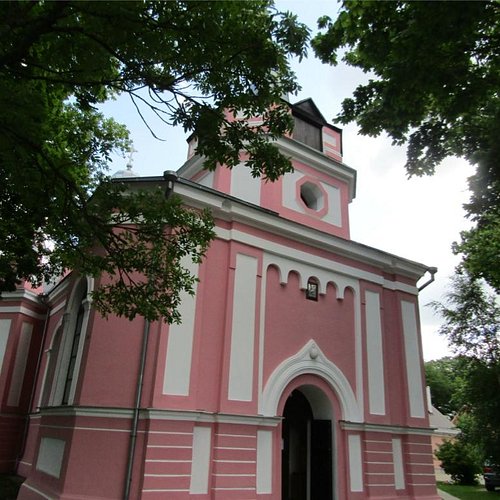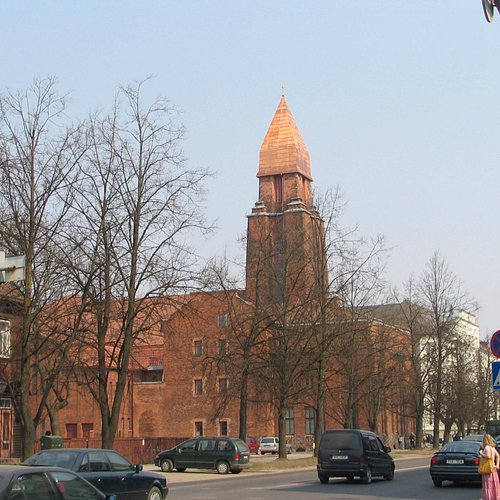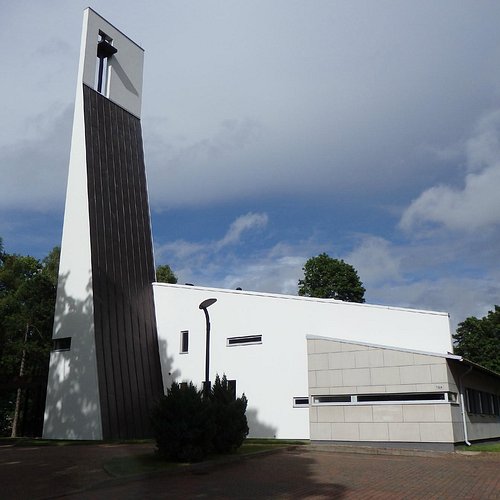Things to do in Tartu, Tartu County: The Best Churches & Cathedrals
Tartu (Estonian pronunciation: [ˈtɑrtˑu], South Estonian: Tarto) is the second largest city of Estonia, after Estonia's political and financial capital Tallinn.
Restaurants in Tartu
1. Tartu Saint George the Martyr Church of the Russian Apostolic Orthodox Church
Overall Ratings
5.0 based on 4 reviews
An orthodox congregation was established in Tartu in 1845 and Priest Joosep Shestakovski (1856-1888) initiated the building of an orthodox church. Tartu Saint George the Martyr Church was built using donations from the congregation and it was consecrated in the honour of Saint George by Bishop of Riga and Mitav Benjamin.Interesting facts:- the Saint George Church in Tartu was also the first place where Patriarch of Russia Alexy II worked after his graduation from the clerical academy.
2. Roman Catholic Church of Immaculate Conception of the Blessed Virgin Mary
Overall Ratings
5.0 based on 5 reviews
You are welcome to admire the Gothic red brick house of God (architect Wilhelm Schilling). The Church of Immaculate Conception of the Blessed Virgin Mary is the only Roman Catholic church in Tartu. The cornerstone was placed in 1862 and the church was consecrated in 1899. You will find the painting "Virgin Mary with Jesus" (1905) by Ernst Friedrich von Liphardt and a large crucifix carved of lime tree (1935) in the high-vaulted church.Interesting facts:- even Tsar Nicholas II donated 3000 roubles for the construction of the church in 1894 when Priest Friedrich Zhyskar started raising funds for building the church.
3. Tartu St Peter’s Church of the Estonian Evangelical Lutheran Church
Overall Ratings
4.5 based on 23 reviews
A grand and stylish pseudo-gothic brick church (architects Viktor Johann Gottlieb Schroter, Georg Hellat) greets you right next to the site of the first general song festival of Estonia. In the church, you can admire Johann Koler's altar painting 'Inviting Christ' (1897) and enjoy concerts in the hall that has room for up to 3000 people.Interesting facts:- WG Eisenschmidt, one of the first Estonian pastors, was the first pastor of the congregation and he served them for 53 years;- St Peter’s Church has a 19th century organ with 22 registers.
4. St Paul’s Church of the Estonian Evangelical Lutheran Church
Overall Ratings
4.5 based on 24 reviews
Come and marvel at the unique silhouette of this beautiful art nouveau church (architect Eliel Saarinen). Tartu St Paul’s Church is one of the most outstanding 20th century sacral buildings in Estonia (1915, consecrated in 1917). You can admire the altar (1923) with the group of marble sculptures ‘Come to me, all ye who are weary and burdened’ by Amandus Adamson. The bells made in Ruhrland in 1923 ring in the tower of St Paul’s Church and a there is also a shop of Christian literature and symbols in the church.Interesting facts:- one of the wings of the church was used by the Estonian Museum of Sports for almost 40 years.
5. St Luke’s Church of the Estonian Methodist Church
Overall Ratings
4.5 based on 2 reviews
Tartu St Luke’s Church is a modern sacral building (architect Indrek Allmann), which is located in the Toomemagi area.Interesting facts:- Tartu St Luke’s Church was declared the best new building in Tartu in 2002;- the church is located on the site that used to belong to the famous professor of surgery Zoege von Manteuffel.
6. Salem Baptist Church of the Alliance of Estonian Evangelical Christian Baptist Congregations
Overall Ratings
4.0 based on 2 reviews
Come and take look at the modern and spacious church of the Tartu Salem Baptist Congregation (architect Maarja Nummert). The church was opened on 28 June 1988 with a concert and thanksgiving service. You are welcome to enjoy concerts in the church hall that has great acoustics and space for almost 400 people. Interesting facts:- the only baroque organ in Tartu is in the Tartu Salem Baptist Church;- the church offers accommodation to travellers.
7. Uspenski Cathedral of the Estonian Apostolic Orthodox Church
Overall Ratings
4.0 based on 21 reviews
Construction of the Tartu Uspenski Cathedral started by the order of Peter I after the Northern War and it was consecrated in 1783. The church was established on the foundation of the Dominican Convent Church. It was initially built in the shape of a cross and was given its quadrangular shape in 1840. Interesting facts:- a chapel to St Isidor, who died as a martyr, was established in the church in the course of its extension;‑ the Bolsheviks killed 19 innocent people in the cellar of Krediidikassa 80 years ago. Their victims, archpriests Bleive and Berzhanitski, are buried in Uspenski Church.
8. Tartu St Luke's United Methodist Church
Overall Ratings
3.5 based on 2 reviews
In Noo, you can visit the only country church with genuinely medieval walls and arches in Southern Estonia. The church is adorned by a wooden tower (1819) and stylish pseudo-Gothic furnishings from the 19th century. You will see the altar painting ‘Christ on the Cross’ by Tonis Grenzestein from 1895 and 4 wooden sculptures of apostles (Jaan Koort, 1910) in the Noo St Lawrence Church. Interesting facts: Noo Church is the only brick church in Southern Estonia - all requisites of the church are under conservation as artistic monuments.
9. St. Mary's Church
Overall Ratings
3.0 based on 6 reviews
The classical St. Mary's Church was built in 1842 to be the church of city of Tartu and the Estonians in the parish. Here the music activist, organiser of the song festival and writer Adalbert Hugo Willigerode worked, also the parish clerk Juhan Kurrik, who put together the first Estonian physical education book, minister Aksel Erich Vooremaa, who died as a martyr and many others. There was a fire on June 12, 1941 and later the Estonian Academy of Agriculture used it as a gym. The building was returned to the congregation only in 2009 and the restoration of the building as a church has now began. The outside of the church will be restored as it was before and a modern church and congregation centre will be built inside.
10. St Alexander’s Church of the Estonian Apostolic Orthodox Church
Come and take a look at the two-storey St Alexander’s Church in Tartu with its onion domes inspired by old Russian church architecture (architect Vladimir Lunski). Construction of the church started in 1914 and it was re-consecrated in 2003. Interesting facts:- a zinc box with the remains of a saint and a copper plate with a letter have been placed in the cornerstone of Tartu Alexander’s Church. The cornerstone was put in place by Archbishop Ioann during the reign of Emperor Nicholas II on 27 May 1914; - the church was nationalised in 1940 and it was used as a storage building by the University of Tartu and the Estonian National Museum.










